Excavation Contractors Homeland
Find top Excavation Services in Homeland
Receive 3 FREE Excavation Companies quotes for your project today! Compare profiles, reviews, accreditations, portfolio, etc... and choose the best deal.
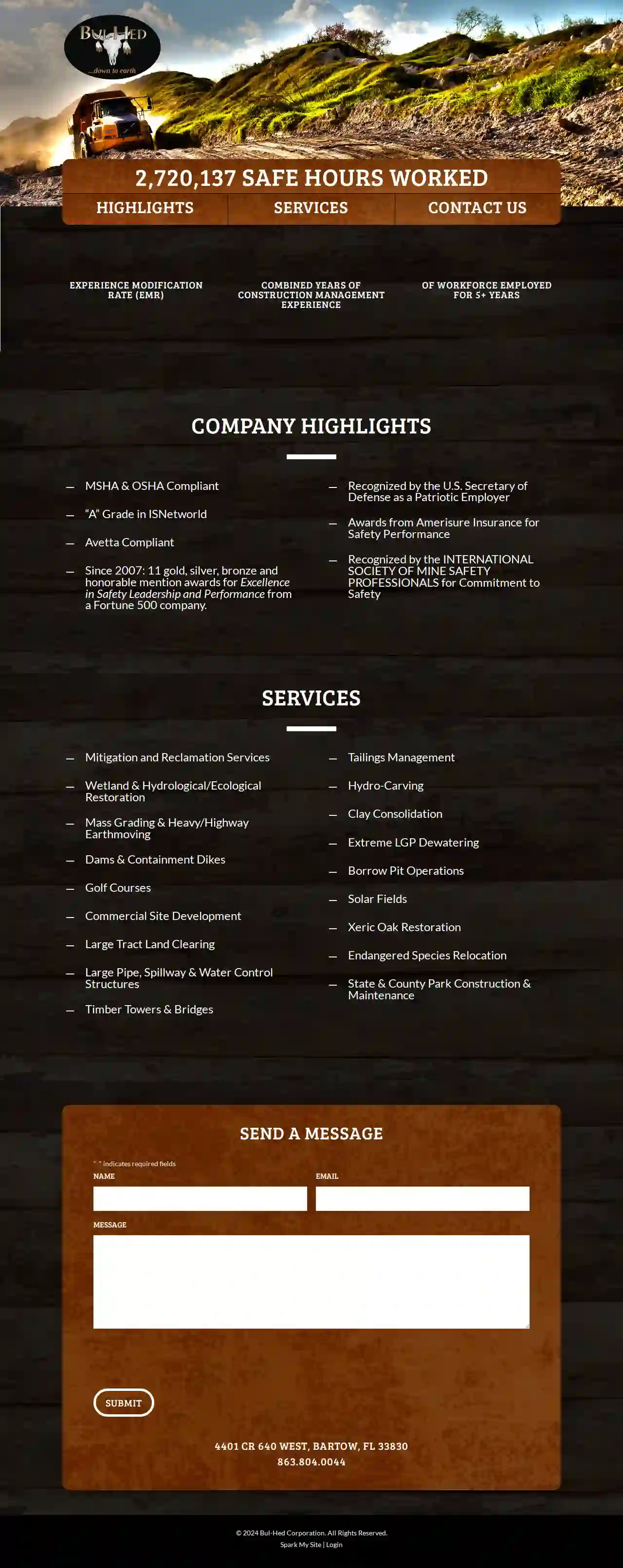
Bul Hed Corporation
511 reviews4401 CR 640 West, Bartow, 33830, US2,720,137 Safe Hours Worked Bul-Hed Corporation is a leading provider of environmental construction and reclamation services. We have a proven track record of success in delivering high-quality, safe, and environmentally responsible projects. Our team of experienced professionals is committed to exceeding our clients' expectations and delivering projects on time and within budget. Company Highlights MSHA & OSHA Compliant “A” Grade in ISNetworld Avetta Compliant Since 2007: 11 gold, silver, bronze and honorable mention awards for Excellence in Safety Leadership and Performance from a Fortune 500 company. Recognized by the U.S. Secretary of Defense as a Patriotic Employer Awards from Amerisure Insurance for Safety Performance Recognized by the INTERNATIONAL SOCIETY OF MINE SAFETY PROFESSIONALS for Commitment to Safety
- Services
- Why Us?
- Gallery
Get Quote
Souza Construction & Electric
52 reviews586 So. Farmersville Blvd., Farmersville, 93223, USSouza Construction Inc. is a growing construction business, striving ever forward to become a premier general contractor. From our beginning as a “one-man show”, until our present state as a “multi-faceted” team, one thing has remained constant, a commitment to customer service. It is this commitment that has helped Souza Construction Inc. nearly double its sales every year for the last four years. We firmly believe that it will be this continuing commitment that will assist us in continuing this phenomenal growth pattern. Essential to this excellent service are our capabilities as a builder and a business. THE SOUZA COMMITMENT Souza Construction Inc. has committed itself to recruiting and training leaders in both the construction and professional world. Assembling a team of this caliber is not a quick or simple process, but requires diligent research, highly refined discernment, and continuous assessment. However, it is just this level of commitment and attention to detail that sets us apart. Souza Construction Inc. has made this our primary goal: understanding our customers and their needs, utilizing excellence in the field and in administration, and combining this with an unwavering commitment to customer satisfaction; this is Souza Construction Inc.
- Services
- Why Us?
- Testimonials
- Gallery
Get Quote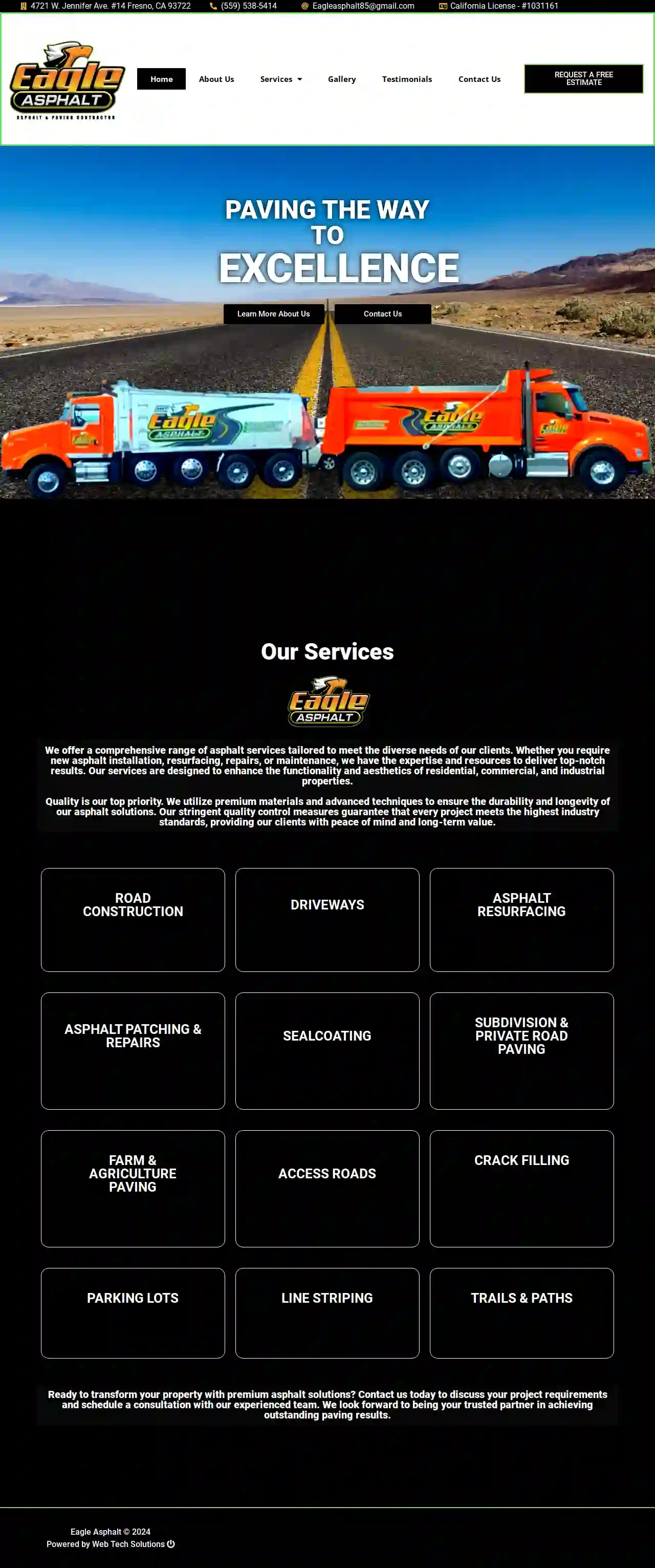
Eagle Asphalt - Asphalt & Paving Contractor
4.920 reviews4721 W. Jennifer Ave., #14, 4721 W. Jennifer Ave. #14, Fresno, 93722, USEagle Asphalt CA Eagle Asphalt proudly offers a wide range of services, we are your one-stop pavement and asphalt solution! Whether it be an asphalt overlay, new asphalt construction, or asphalt repair, Eagle Asphalt in Fresno, California has the experience and expertise to see the job through from start to finish. Give us a call… today! Eagle Asphalt in Fresno, CA is Locally Owned, Licensed & Insured. Serving Central Valley.
- Services
- Why Us?
- Our Team
- Testimonials
- Gallery
Get Quote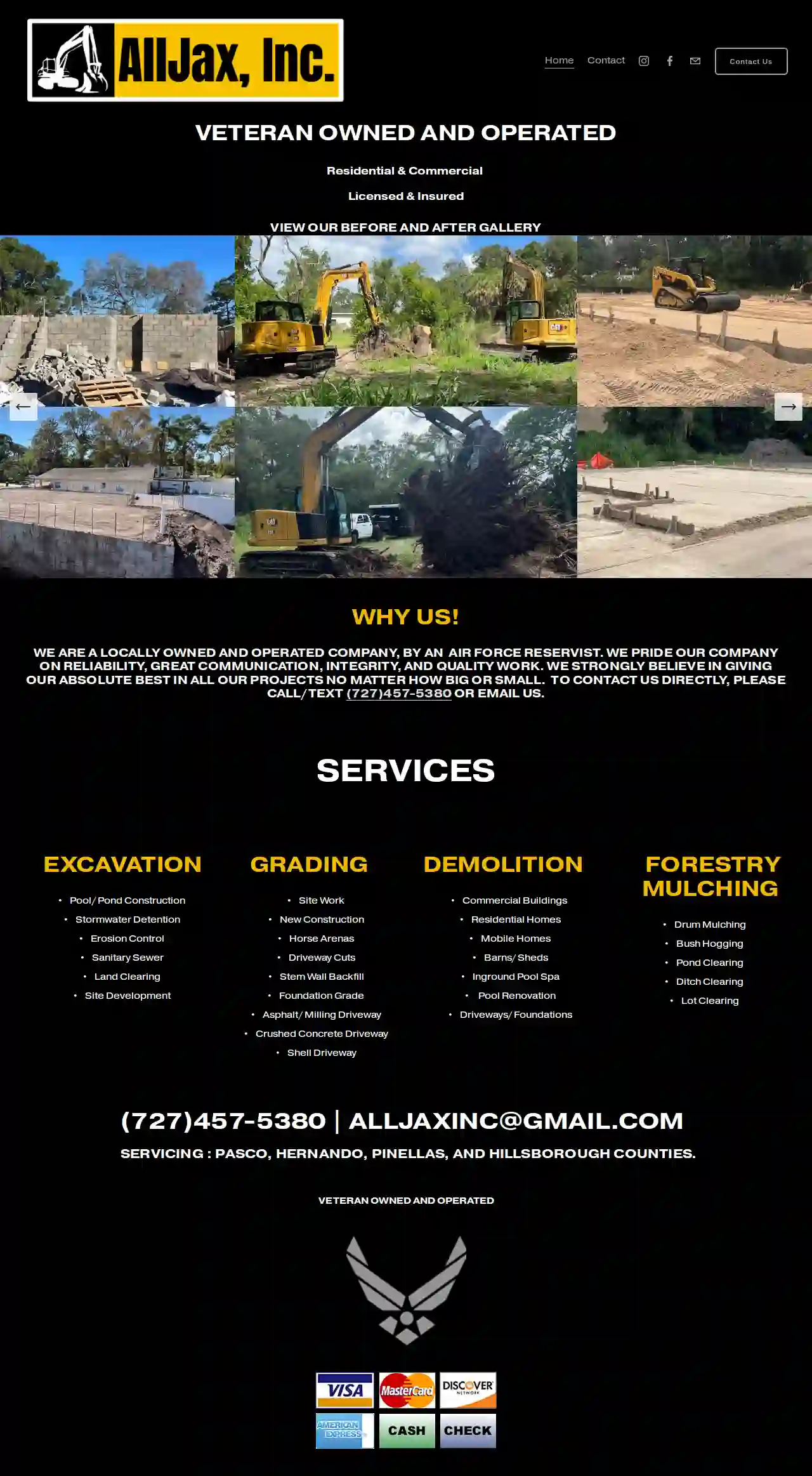
AllJax Inc Excavation, Forestry Mulching & Pond Clearing
4.935 reviewsDavis, USAllJaxInc is a locally owned and operated company, run by an Air Force reservist. We take pride in our reliability, excellent communication, integrity, and high-quality work. We are committed to delivering our best on every project, big or small. We are dedicated to providing exceptional service to our clients in Pasco, Hernando, Pinellas, and Hillsborough Counties. Our team is experienced in a wide range of services, including excavation, pool and pond construction, stormwater detention, erosion control, sanitary sewer, land clearing, site development, forestry, demolition, and grading. We are fully licensed and insured, and we are proud to be a Veteran Owned and Operated business. To contact us directly, please call/text (727)457-5380 or Email Us.
- Services
- Why Us?
- Gallery
Get Quote
Cloud 9 Services, A Wind River Environmental Company
4.776 reviews1201 West Jackson St, Orlando, 32805, USUnderground Utilities Experts SERVICING COMMERCIAL, INDUSTRIAL, AND MUNICIPALITY INDUSTRIES GET A QUOTE Cloud 9 Services LLC is the underground plumbing and utility company that commercial, industrial, and municipal HOAs and property managers all over Florida consistently turn to. As a licensed and certified company that specializes in mechanical, plumbing, and underground utility (Drain Cleaning) and excavation, we stand out against our competitors. One reason why we have become the leading utility company in Florida is because we never close. Our customers can get in touch with us during an emergency at any time of the day or night. However, being able to get in contact with us at any time is just one of the benefits of working with Cloud 9 Services LLC. No other business in the Florida area performs mechanical, plumbing, and underground utility work with as much precision and skill as we do. Sometimes, finding the root of an underground plumbing issue can be difficult because these issues arise in an area that cannot be seen easily. At Cloud 9 Services LLC, we are able to find the root of any problem and solve any type of issue with ease and efficiency. Not only are we able to solve any sort of underground plumbing issue with drain cleaning, but the services we offer our customers are comprehensive and varied. No longer will have you have to jump from one company to other when you work with Cloud 9 Services LLC because we do it all. We perform pipe repair, hydro-excavation, drain cleaning, sanitary sewer line repair & cleaning, Jet Vac cleaning, lift station maintenance & repair, video pipe inspection, and much more. Whatever underground utility, plumbing, or construction job in the Florida area, you bring to us, we guarantee that we can do it right! WHAT OUR CUSTOMERS SAY Belinda G.You did everything you said you would do and the guys on-site backed up your promises. And they weren't stopping until the job was done. I can't recommend you and your team more! We are an extremely satisfied customer. A.W.Cloud 9 Services has been a pleasure to work with over the years. I can always count on them to get the job done, no matter the time of day!. Thank you for always doing a great job! Bob S.Cloud 9 services did an outstanding job. I could not be more pleased. Their work was excellent and the price was very reasonable. Please feel free to use me as a reference if helpful. Without reservation, I can confidently recommend Cloud 9. Cloud 9 Services Proudly Serves All of Florida! Cloud 9 Services, LLC has an established management team that has over 20 years of combined experiences in all our services offered. Making them your go-to guys for any and all questions you may have about our services, giving you the confidence to choose us to perform any job you need. Our team of licensed and trained technicians are ready to handle anything your job throws at them and delivery quality results in a timely manner.
- Services
- Why Us?
- Testimonials
- Gallery
Get Quote
ZS Construction
58 reviewsWoodland, USZS Construction: Your Northern California Construction Partner Established in 2022, ZS Construction is a privately held business serving all of Northern California. We are dedicated to providing high-quality construction services with a focus on customer satisfaction. Our team is committed to delivering exceptional results for every project, no matter the size. ZS Construction, founded by Zach Sanders, is a professional construction company based in Woodland, CA. We offer a wide range of services including excavation, land grading, landscaping, concrete, septic tanks, and demolition. Our expertise and attention to detail ensure that your construction needs are met with the utmost professionalism. We serve Yolo, Tehama, Shasta, Butte, San Joaquin, Napa, Sonoma, and Colusa County. If you are within reach of any of these counties, feel free to get in touch with us today! We provide expert-level service and a timely schedule so you can stay on track for your projects and get things done. Our customers are of the utmost importance to us, and we always strive to meet your expectations and ensure your satisfaction with the level of quality we provide. At ZS Construction, we value our customers above all else. Your needs and project requirements are at the forefront of our business. With our expertise and attention to detail, we guarantee that you will see a noticeable difference in the quality of our work. Being based in Woodland, CA, we service primarily counties in Northern California. Let us handle your construction needs and experience the exceptional service that sets us apart from the rest.
- Services
- Why Us?
- Our Team
- Gallery
Get Quote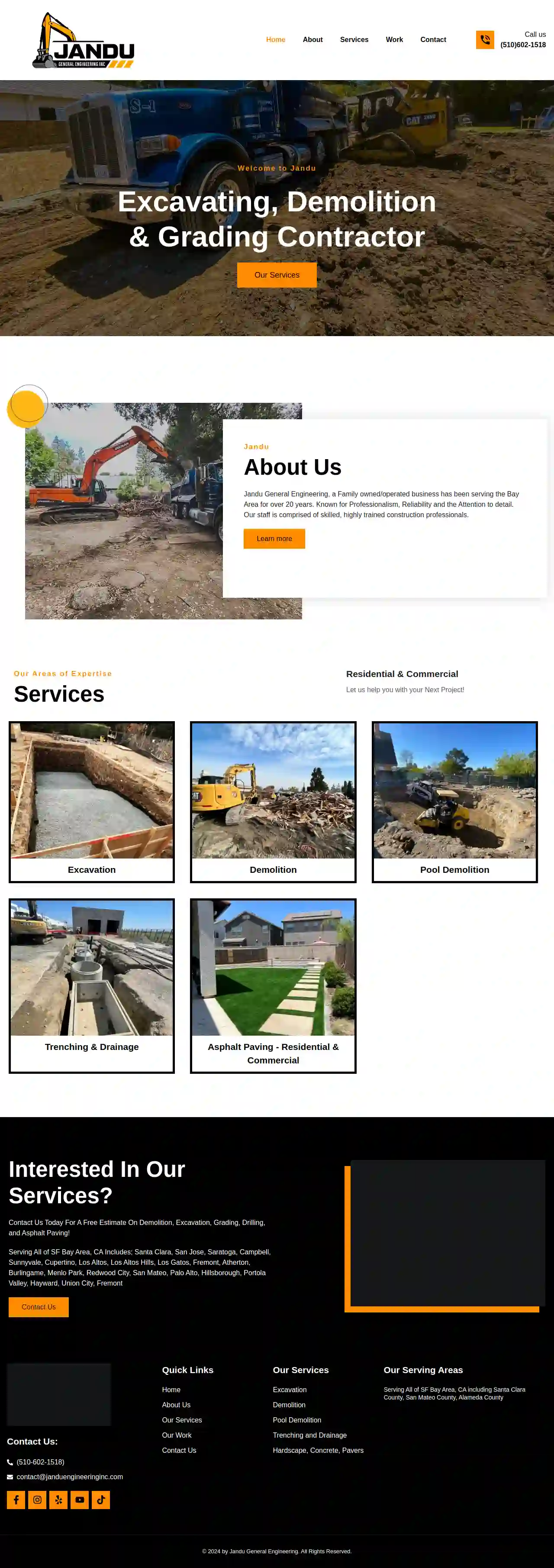
Jandu General Engineering Inc
59 reviewsSaratoga, 95070, USJandu General Engineering, a family-owned and operated business, has been serving the Bay Area for over 20 years. Known for professionalism, reliability, and attention to detail, our staff is comprised of skilled, highly trained construction professionals. We are committed to safety, environmental responsibility, integrity, and honesty. Our team understands and recognizes that the key to continued success is the satisfaction of every client. Every effort is made to exceed clients' expectations. Quality finish and overall job organization are paramount to us. We work efficiently and at the highest level of excellence while keeping safety and cost savings a top priority. Quality service goes beyond the job itself as our team is happy to provide the best service to our customers. We are happy to answer all questions you may have before, after, and along the way.
- Services
- Why Us?
- Gallery
Get Quote
Roto-Rooter Plumbing & Water Cleanup
4.8Fort Lauderdale, USYour Local Roto-Rooter Plumber in Fort Lauderdale, FL Need a plumber in Ft. Lauderdale, FL? Roto-Rooter is your trusted choice for drain cleaning, water heater repair, and emergency plumbing needs. Ft. Lauderdale residents and businesses depend on us for plumbing services 24/7, 365 days a year, including holidays. Our experienced plumbers will promptly, affordably, and efficiently address your plumbing concerns. Trusted and recommended since 1935, we are the leading plumbing company in the USA. When you choose Roto-Rooter of Ft. Lauderdale, you can expect the following: Same day service 24/7 availability No hidden or extra charge for plumbing or drain service on holidays, nights, and weekends Free onsite and upfront estimates Professional, experienced plumbers State-of-the-art diagnostics and equipment Senior and military discounts Coupons and financing options available Contact us at 954-735-3879 or use our online scheduling form to arrange an appointment with one of Roto-Rooter's friendly, professional Ft. Lauderdale plumbers.
- Services
- Why Us?
- Testimonials
- Gallery
Get Quote
A-ROD Construction
54 reviewsSuite 100, 6010 McPherson Rd., Laredo, 78041, USA-ROD Construction Inc. A-ROD Construction Inc. is proudly owned by South Texan and Native Laredoan, Armando “Mando” Rodriguez. At A-ROD Construction, we take great pride in our work and value our customers as our primary asset. The company was established in the year 2000 as a fully-bonded heavy equipment dirtwork and asphalt operator. We have been proudly serving Laredo and surrounding areas in South Texas with over 20 years of experience. We specialize in site work, excavating, and asphalt paving. Our other services include underground utilities, subdivisions, mass earth work, warehouse pad sites, concrete work, and much more. Contact us for all of your Commercial, Industrial, or Residential construction needs. As of 2019, we have been proud to announce our expansion to San Antonio, Texas and surrounding areas. Today, A-ROD Construction has continued to grow & expand rapidly, while earning a trusted reputation due to the satisfaction of our valued customers. Commercial, Residential, and Industrial Projects Our scope of work includes Commercial, Residential and Industrial projects. If you are interested in our wide range of services and the value that we can bring to your operation, let’s discuss your project today! Contact A-ROD Construction now.
- Services
- Why Us?
- Gallery
Get Quote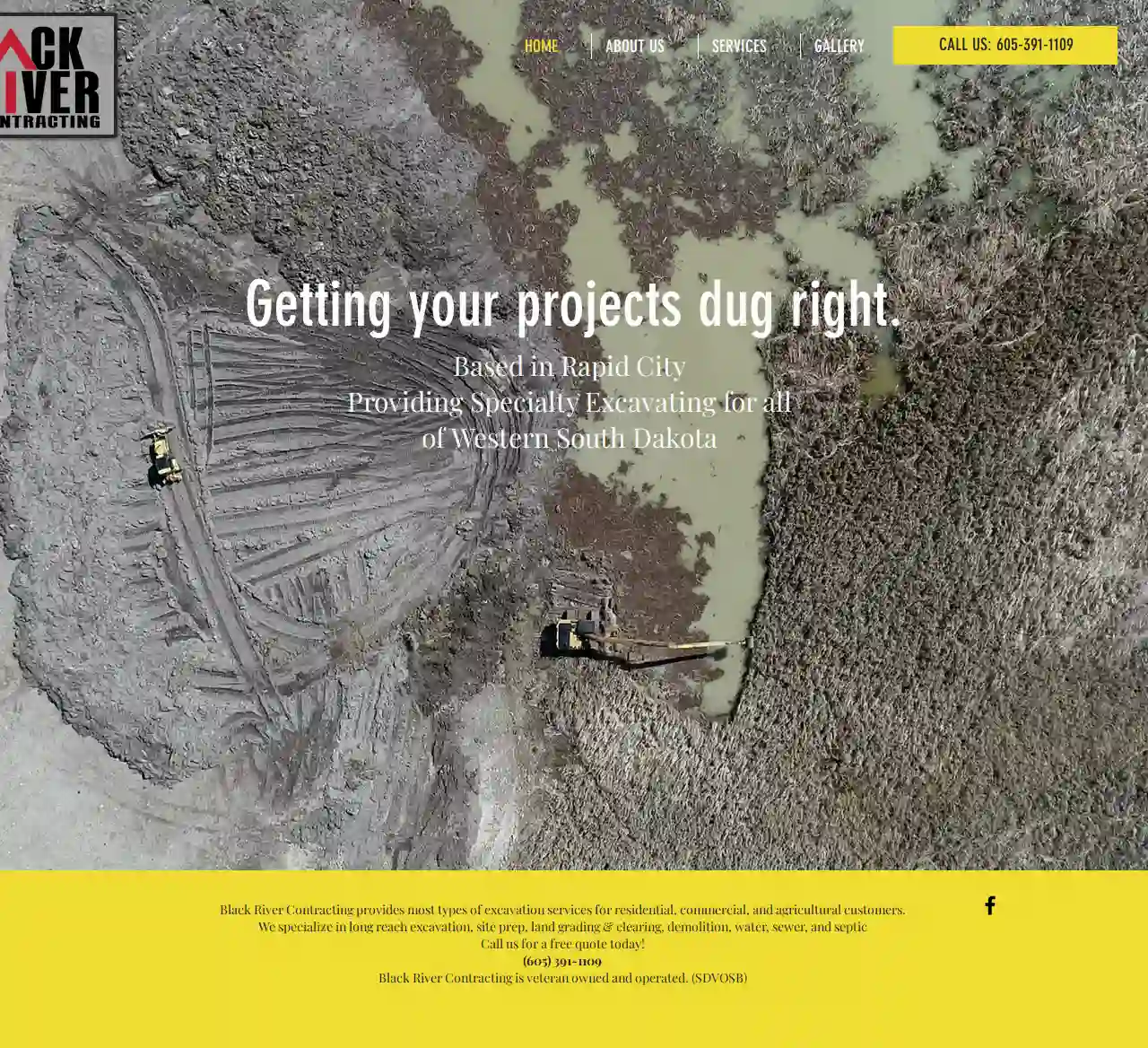
Black River Contracting
59 reviewsOakland, USGetting your projects dug right. Based in Rapid City Providing Specialty Excavating for all of Western South Dakota Black River Contracting provides most types of excavation services for residential, commercial, and agricultural customers. We specialize in long reach excavation, site prep, land grading & clearing, demolition, water, sewer, and septic Call us for a free quote today!
- Services
- Why Us?
- Gallery
Get Quote
Over 22,076+ Excavation Businesses onboarded
Our excavation providers operate in Homeland & surroundings!
ExcavationHQ has curated and vetted the Best Excavation Pros in and around Homeland. Find a top & reliable business today.
Frequently Asked Questions About Excavation Contractors
- Clearly Define the Scope: Outline the project's goals, including the excavation area, depth, grade, and intended use.
- Obtain Necessary Permits: Research and acquire any required permits from your local authorities.
- Mark Utility Lines: Contact your utility companies to locate and mark underground utilities to prevent damage.
- Communicate with Neighbors: Inform your neighbors about the project's timeline and potential noise or disruptions.
- Prepare the Site: Clear any obstacles, such as vegetation, furniture, or structures, from the excavation area.
- Discuss Safety Protocols: Review safety procedures with the contractor to ensure a safe work environment.
- Mechanical Excavation: Utilizing heavy equipment like excavators, backhoes, bulldozers, and loaders, suitable for most projects.
- Hand Excavation: Using hand tools (shovels, picks) for smaller excavations or delicate work near utilities.
- Blasting: Employing explosives to break up rock or hard materials, typically for large-scale projects.
- Hydro Excavation: Using high-pressure water jets to loosen and remove soil, often used for locating utilities or delicate excavation.
- Vacuum Excavation: Employing a vacuum system to suck up excavated material, suitable for safe excavation near utilities or in confined spaces.
- Basement Size: The larger the basement, the more excavation is required, increasing the cost.
- Soil Type: Excavating rocky or dense clay soil is generally more expensive than loose soil.
- Accessibility: Difficult-to-access sites might require specialized equipment or more labor, driving up costs.
- Foundation Type: The chosen foundation type (full basement, crawl space, slab) affects excavation needs.
- Underpinning: If underpinning (strengthening existing foundations) is necessary, it significantly increases costs.
- Disposal Fees: Hauling excavated soil to disposal sites adds to the overall expense.
What should I do before excavation starts?
What is the difference between cut and fill excavation?
Cut: Involves excavating soil from an area where the existing grade is higher than the desired grade.
Fill: Refers to using the excavated soil ('cut' material) to raise the grade in an area where the existing grade is lower than desired.
This method minimizes the need to import or export soil, reducing costs and environmental impact. It's commonly used for site preparation, road construction, and landscaping.
What are the different methods of excavation?
How much does it cost to excavate a basement?
What should I do before excavation starts?
- Clearly Define the Scope: Outline the project's goals, including the excavation area, depth, grade, and intended use.
- Obtain Necessary Permits: Research and acquire any required permits from your local authorities.
- Mark Utility Lines: Contact your utility companies to locate and mark underground utilities to prevent damage.
- Communicate with Neighbors: Inform your neighbors about the project's timeline and potential noise or disruptions.
- Prepare the Site: Clear any obstacles, such as vegetation, furniture, or structures, from the excavation area.
- Discuss Safety Protocols: Review safety procedures with the contractor to ensure a safe work environment.
What is the difference between cut and fill excavation?
Cut: Involves excavating soil from an area where the existing grade is higher than the desired grade.
Fill: Refers to using the excavated soil ('cut' material) to raise the grade in an area where the existing grade is lower than desired.
This method minimizes the need to import or export soil, reducing costs and environmental impact. It's commonly used for site preparation, road construction, and landscaping.
What are the different methods of excavation?
- Mechanical Excavation: Utilizing heavy equipment like excavators, backhoes, bulldozers, and loaders, suitable for most projects.
- Hand Excavation: Using hand tools (shovels, picks) for smaller excavations or delicate work near utilities.
- Blasting: Employing explosives to break up rock or hard materials, typically for large-scale projects.
- Hydro Excavation: Using high-pressure water jets to loosen and remove soil, often used for locating utilities or delicate excavation.
- Vacuum Excavation: Employing a vacuum system to suck up excavated material, suitable for safe excavation near utilities or in confined spaces.
How much does it cost to excavate a basement?
- Basement Size: The larger the basement, the more excavation is required, increasing the cost.
- Soil Type: Excavating rocky or dense clay soil is generally more expensive than loose soil.
- Accessibility: Difficult-to-access sites might require specialized equipment or more labor, driving up costs.
- Foundation Type: The chosen foundation type (full basement, crawl space, slab) affects excavation needs.
- Underpinning: If underpinning (strengthening existing foundations) is necessary, it significantly increases costs.
- Disposal Fees: Hauling excavated soil to disposal sites adds to the overall expense.